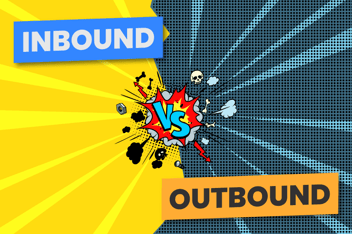Why You Need Social Media Guidelines for Employees and Partners
Andrea Pelizzari
21 May 2019

Social media has revolutionised how we connect with others. No longer just a way to keep in touch with what our family members were up to on the weekend, social networking has become a powerful marketing and sales channel.
From lead generation to customer service, social media help us engage with people around the globe.
This easy flow of information and connection is a double-edged sword. Legal and security risks are an obvious concern, but organisations also need to consider issues like:
- consistency in corporate branding
- confidentiality
- maintaining appropriate personal/professional boundaries
Social media guidelines for your organisation help make sure that your employees know what they can and can’t do online. Clear guidelines help avoid legal and security problems. They can make sure that employees, contractors, and partners understand your social media strategy and conduct themselves appropriately online.
What are Social Media Guidelines?
Social media guidelines clearly outline a set of expectations relating to an employee’s online behaviour. Such guidelines state what is and is not an acceptable use of various social media platforms for employees, contractors and partners.
Given the speed at which the social media landscape shifts and changes, it is difficult to write a set of rules to cover all situations. Instead, guidelines provide a general set of principles that can be applied across a broad range of circumstances.
For example, rather than saying, “Do not post personal photos on Facebook,” the guideline might state, “Any image you share should be something you would be comfortable with should it appear on the front page of the local newspaper.”
The more general guideline applies whether one is posting to Instagram, Facebook, LinkedIn or forwarding an image attached to an email. Rather than coming up with a long list of what shouldn’t appear in a photo, this approach makes it easier for employees to run a simple self-test before sharing.
What can go wrong without Social Media Guidelines?
You may remember the backlash that followed a tweet published by a Wendy’s employee with a certain frog wearing a Wendy’s wig. The frog was not just any frog but a symbol of anti-Semitism. Predictably, the gaffe was soon filling social media feeds everywhere even after they had removed the offensive tweet. One thoughtless post, image, or meme originating from an organisation account can create huge headaches for brands.
With the lines blurring between public and private, it’s more important than ever to put clear and effective social media guidelines in place. More and more organisations are doing that, often in response to a social media incident gone wrong.
It doesn’t take much imagination to see how an employee could get into trouble by making a strong statement on either side of a hot-button topic or telling an off-colour joke. The public furore which quickly follows puts pressure on the organisation to take corrective action and can cause the employee a huge amount of stress.

Benefits of Social Media Guidelines
Having a clear set of guidelines in place goes a long way toward avoiding potential public relations disasters. Simple social media guidelines can protect both your organisation and your employees from drawing the wrong kind of attention.
The strictest policy areas are probably needed when it comes to mitigating breaches that could have legal repercussions or security ramifications. Sharing confidential personal information is a particular issue. You may think it goes without saying, but inadvertent sharing of patient information, for example, can (and does) occur when employees have a private social media window open on a work computer.
If your social media and marketing team create posting material, make sure everyone has been educated regarding:
- Plagiarism
- Providing appropriate credits
- Full disclosure policies
- The use of employee disclaimers
This can provide some distance between official corporate messaging and private activity.
Sharing a corporate message via social media is now commonplace. A good set of social media guidelines helps ensure that organisation messages are consistent and use an appropriate voice. In a similar vein, corporate messaging should be the same across all social media channels. Social media guidelines can help employees know when, what and how to share in a way that’s aligned with the organisation’s messaging.
If things do go terribly wrong, have a crisis management plan ready to implement.
What to include in Social Media Guidelines
The more clearly you articulate your organisation’s social media guidelines, the less likely you are to find yourself putting out viral fires. Providing guidance in the following areas will go a long way toward keeping social media messaging on point and appropriate.
Articulate your brand message
Clarify what limits and expectations your organisation has relating to your brand etiquette. Include some examples of what you consider useful and acceptable content and engagement. Be sure all employees and contractors understand their responsibilities. This is a good time to remind them of their legal and confidentiality obligations, particularly in medical, legal, and financial fields.
Clarify when, where and how employees can engage in Social Media activity
Decide whether it’s appropriate to use personal social media feeds at work. Do you want to leverage the power of personal posts and engagement to promote organisational messaging? If so, staff will need access to social media!
You will also need to determine how to balance the potential usefulness of personal engagement against the challenges relating to controlling what individuals post as themselves (as opposed to as your brand).

Organisations shouldn’t try to stifle freedom of expression when an individual is not at work, not using a work account and not representing the organisation. Likewise, employees must understand their responsibilities when they are speaking on behalf of the organisation. This ensures they are delivering a message that meets with corporate guidelines.
Articulate the Consequences Before There’s a Problem
It’s also important to make clear what the consequences are of violating the policies you have put in place. Consequences will range from a verbal warning to dismissal, depending on the severity of the violation and the potential harm.
Educate Everyone at all levels of the organisation
Make sure you clearly outline the roles and responsibilities of all those involved with social media management. All staff must be well educated about security and privacy concerns and understand the related industry and legal regulations and standards.
Many employees are under the impression that privacy settings are adequate protection against inappropriate sharing. Everyone acting on behalf of the organisation must understand that anything posted on social media can be shared regardless of privacy settings. You should assume that this will occur when deciding what to pass along via the Internet.
A clear accountability chain helps everyone know who is responsible and what happens in the case of a breach of policy. This begins with each employee being responsible for reading and understanding your corporate social media policy and extends up the chain of command so all cases are treated fairly when a violation occurs.
How to implement a social media policy
It’s always more productive to develop policy and guidelines in partnership with all user groups. The fastest way to limit buy-in is to establish a top-down, heavy-handed set of ironclad rules and punishments that are hard to implement and police. Smart social media management requires agreement and understanding from all employees and partners. Much activity online requires self-monitoring and decision-making, often done quickly, and sometimes not originating from a corporate account.
Be prepared: you’ll sleep better at night
If your team understand your brand voice, the messages you are trying to convey and the relationships you are building, there is less chance that someone is going to fire off a thoughtless tweet.
In fact, it’s a great idea to leverage the power of your workforce to generate creative, engaging content and help build the relationships on which all good organisations are built. Instead of harsh limits and punishments for social media use, embrace the new technology and partner with your employees to creatively broaden your reach and engage your clients in innovative ways.
No need to reinvent the wheel
It can be very helpful to review the social media guideline wording used by other companies. Here are a few examples to get you started:
Reach out if you need a hand
It’s hard to know where to best focus your efforts when it comes to effective social media marketing. If you are looking for online marketing help, get in touch with Refuel Creative!


